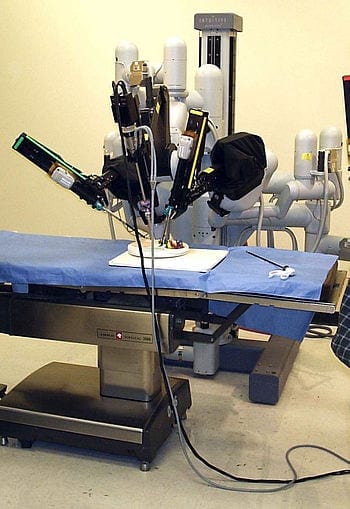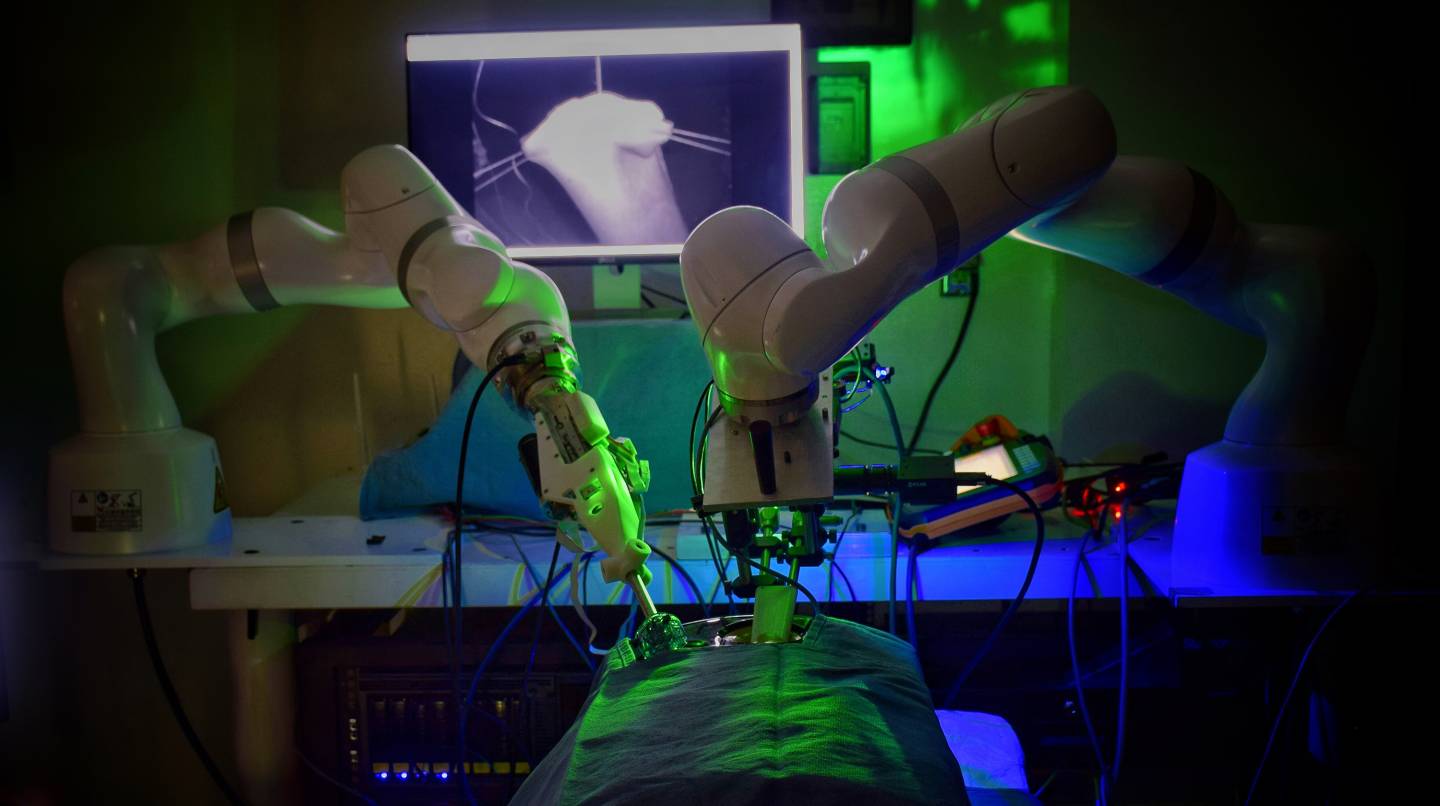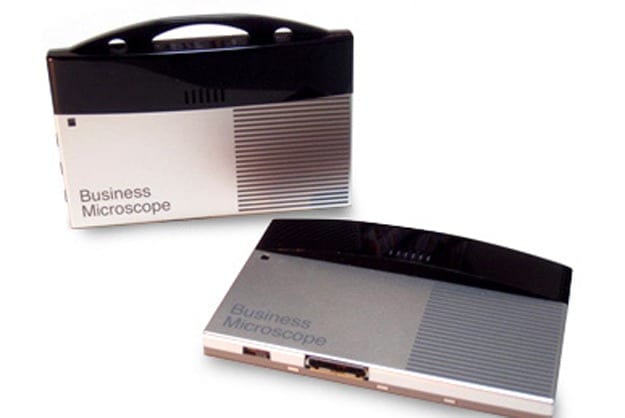
If the open-source approach to building robot surgeons can cut costs and improve performance, patients will increasingly find them at the other end of the scalpel
For much of its brief history, robot-assisted surgery has been synonymous with Intuitive Surgical, Inc.’s da Vinci system. It’s the only robot with U.S. Food and Drug Administration (FDA) approval to help surgeons perform a number of laparoscopic soft-tissue procedures, including hysterectomies, gall bladder and kidney removals, prostate cancer treatment and heart valve operations. Da Vinci has improved vastly since Intuitive introduced it more than a decade ago. Like many new technologies, however, it has experienced growing pains, leading some engineers and medical professionals to question whether a single company can meet growing demand while still delivering a safe product.
A team of researchers is looking to address these issues by developing a robotic surgery system based on hardware designs and software that are freely available. In this open-source approach, the builders would keep whatever intellectual property they’ve invested in the project but must make their knowledge and discoveries available to others.
The researchers, from the University of California, Santa Cruz, and the University of Washington (U.W.), hope their efforts will lead to a number of advances in surgical-robot technology that would stem from a basic design that wouldn’t change from device to device. The idea is that the costs of building—and buying—multimillion-dollar robotic surgery systems would decrease, as would the learning curve to use them.
The open-source model has worked well in the software industry, enabling startup companies to challenge Goliaths like Microsoft and Oracle by offering lower prices as well as collective review of new advances. Some of the more visible products of open-source innovation include Google’s mobile Android operating system, which is based on Linux, and Mozilla’s Firebox Web browser. Engineers and designers have also launched efforts to collaboratively develop open-source general-purpose robots as well as prosthetic limbs. Brewers have even applied the approach to making beer, tweaking and redistributing one original recipe to a broader community of enthusiasts.
Gold standard
Da Vinci has been assisting surgeons since it received FDA approval in 2000, helping them operate quickly and efficiently in tight spaces. The device’s four arms can wield any number of instruments, including scalpels, forceps, graspers and scissors to, for example, make incisions, remove organs, place catheters and close incision points. A surgeon controls these tools while sitting comfortably in front of an ergonomically designed console with the aid of a high-definition 3-D camera, reducing concerns about fatigue during long procedures. Despite its nearly $2-million price tag, the da Vinci’s popularity has grown steadily in recent years. In 2012 doctors used the system to perform more than 350,000 surgeries in U.S. hospitals, a 60 percent increase from 2010.
Intuitive designed the da Vinci to improve on existing laparoscopic surgery—also referred to as minimally invasive surgery because the surgeons perform most of the repair work inside the body by passing tiny video cameras and tools through small incisions. Physicians have reported several advantages to using da Vinci, including less patient bleeding and shorter surgery times, both of which lead to reduced hospital stays and recovery times. T. Sloane Guy, chief of robotics and section chief of cardiovascular surgery at Temple University School of Medicine, likens conventional laparoscopic tools to “chop sticks” and says da Vinci’s computer-controlled tools provide greater freedom of movement in snug spaces during surgery.
The Latest on: Robotic surgery
[google_news title=”” keyword=”Robotic surgery” num_posts=”10″ blurb_length=”0″ show_thumb=”left”]
via Google News
The Latest on: Robotic surgery
- 1st LA-area patient undergoes surgery using Da Vinci 5, the most advanced form of robotic surgeryon May 8, 2024 at 2:44 pm
Adventist Health Simi Valley is one of only 10 hospitals nationwide offering the new Da Vinci 5 robotic surgery technology.
- Breakthrough in robotic surgery for breast cancer; minimal invasive tech used in Karnatakaon May 8, 2024 at 2:34 pm
Bengaluru: With robotic surgery advancing by leaps and bounds, cancer specialists have adopted various robotic tools to improve accuracy and efficiency, making surgeries minimally invasive to achieve ...
- Sarasota’s Wilkinson Elementary hosts HCA Florida for robotic surgery demoon May 8, 2024 at 11:27 am
The excitement was palpable as the medical team from HCA Florida Sarasota Doctors Hospital, led by Dr. John Thomas, an esteemed Sarasota orthopedic surgeon, introduced a technological marvel to the ...
- Robotic knee replacements improve outcomes, cost more: Studyon May 8, 2024 at 10:09 am
While total knee replacements performed with the help of surgical robots have better patient outcomes, they cost an average of $2,400 more than conventional knee replacements, according to new ...
- Nami Surgical Secures Investment to Transform Robotic-Assisted Surgery Marketon May 8, 2024 at 6:05 am
Nami Surgical, which is aiming to transform the robotic-assisted surgery market with a breakthrough ultrasonic platform, has secured $4 million of investment and grant funding. St Andrews-based impact ...
- Mercy Medical Center celebrates 1,000th robotic thoracic surgeryon May 7, 2024 at 9:11 am
SPRINGFIELD, Mass. (WWLP) – Clinical leaders, physicians, and colleagues at Mercy Medical Center will be gathering to celebrate the completion of the 1,000th da Vinci robotic thoracic surgery.
- Shasta Regional Medical Center celebrates milestone in lung cancer surgeryon May 6, 2024 at 5:21 pm
Shasta Regional Medical Center celebrates milestone for minimally invasive lung cancer surgery. Dr. Rafael Lupercio performed his 100th Ion Robotic surgery.The ...
- CMR leaders on the ‘massive advantage’ of Versius and growing robotic surgery penetrationon May 2, 2024 at 10:58 am
CMR Surgical leaders say it'll take the right surgical robot to expand global adoption — and that their Versius system is just the thing.
- Student Work on Robotic Surgical Instrument Honored at International Conferenceon May 2, 2024 at 8:01 am
Major Qualifying Project team’s work on design and kinematic evaluation wins Best Paper Award at symposium in Japan ...
- Future Market Insights Predicts Growth in Global Lung Cancer Surgery Market to Reach US$ 1.98 Billion by 2029on May 1, 2024 at 7:42 pm
Future Market Insights (FMI), a leading provider of market research, analysis, and intelligence, has released a comprehensive report forecasting significant growth in the global lung cancer surgery ...
via Bing News










